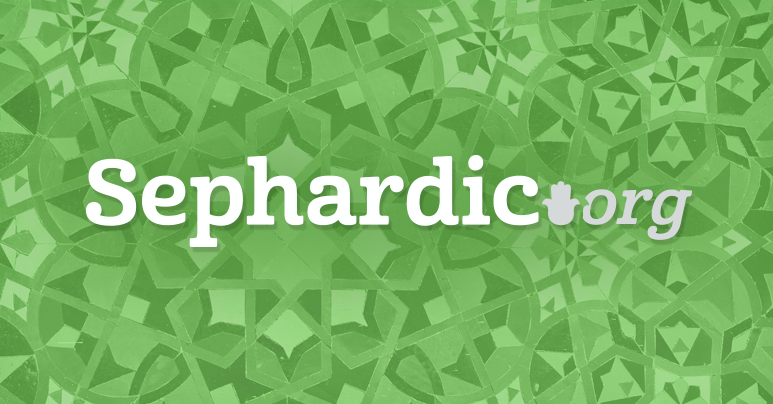
KEDOSHIM - STANDING FOR AN ELDER AND THE FACE OF A SCHOLAR
Included amongst the positive misvot appearing in our parasha is that of standing for an elderly person and or a Torah scholar. Based on the verse מפני שיבה תקום והדרת פני זקן - It appears (at least according to R. Yose HaGelili - KID 32) as if there are two types of individuals that one is required to honor via standing. The first is the non iniquitous שיבה whom according to R. HaAri is an elder who has reached the minimum of age of sixty (seventy - see SK - Shavuot). The second is a זקן who has not reached the threshold in terms of years - but has via his commitment to Talmud Torah - acquired a spiritual level called חכמה making him worthy to stand for. The Talmud (KID 32) cites the term זקן as an acronym for זה קנה חכמה - This one has in virtue of his Torah scholarship acquired the spiritual level of wisdom. The Talmud notes that the Torah juxtaposes the words in the verse תקום והדרת - learning that standing is only required where honor is afforded by doing so - namely when one stands when he is within 4 אמות of the elder or scholar. The two verbs in the verse תקום you shall rise והדרת you shall honor - apply to both an elder and the wise. This definition והדרת is qualified by אביי - in the case of one’s רב מובהק where the mere seeing of his teacher would require him to stand. R. Eleazar warns that one who is negligent in standing at the sight of his primary teacher will amongst other things - forget his learning. R.H.Vital writes (SM Kedoshim) in the name of his teacher that one who stands in honor of an elder or scholar with the correct meditations will be endowed with increased wisdom. It is apparent that one can add to his own Torah scholarship from the spiritual הארה of the wisdom of his teacher thru his eyes - even at a distance while standing - while only being able to access the same from an elder or scholar when standing when he enters into his spiritual proximity. We hope to explain the esoteric reason behind this law which includes the association of these individuals with an elevated level called עמידה or standing in the spiritual worlds. We will also cite a related teaching of R. Akiva concerning the requirement to stand in honor of scholars and the tragic events related in the Talmud that resulted from its neglect.
SPIRITUAL LEVELS ASSOCIATED WITH STANDING
In order to appreciate why one is required to stand when an elder or scholar comes within the four amot proximity - it behooves us to learn of their spiritual roots in the highest celestial world of Asilut. We are familiar with the laws and customs - that require one to adjust his physical position from a sitting to a standing one at certain sections in תפלה - This is integrally tied to the idea that during formal prayer one ascends or descends through the four spiritual worlds. If one finds himself in the general level of אצילות or any sub-level of חכמה כתר - or אבא אריך אנפין - he is to stand. The prayer at the entrance into the world of אצילות is termed שמונה עשרה - others designate it as עמידה - the position one must take when elevated to this level. The other times we stand for example during שחרית are associated with an ascent to the sub level of כתר חכמה within one of the lower worlds. R. HaAri teaches us that not only does our prayer integrate within the four spiritual worlds - but the divide within the people of Israel can also be segregated accordingly. When one reaches the age of sixty it is indicative of a spiritual ascent from his previous state called זעיר אנפין to that of אריך אנפין - In his שער המצוות קדושים - R. Hayyim vital explains that the ראשי תבות of the Torah ruling מפני שיבה תקום hints to the advancement attained מש״ת from the age of sixty. He is in possession by virtue of his age (and non iniquitous nature) of the first six of the 13 emendations of the beard of אריך אנפין - Hence when he enters within another’s spiritual proximity one is required to stand to be commensurate with that level. The scholar on the other hand has been elevated from his former position of זעיר אנפין by virtue of his scholarship which is synonymous of his drawing down the elevated מוחין דחכמה within his self. This also warrants one to stand when he enters into their spiritual proximity to be commensurate with this level - also associated with standing.
THEIR RELATIONSHIP WITH THE BEARD
R. HaAri uses anthropomorphic terms in describing the relationships between an elder and a young scholar and their spiritual counterparts above. We mentioned earlier that the beard of a שיבה is reminiscent of the spiritual beard of אריך - of 13 emendations - or י״ג תיקני דיקנא - which are channels of unbound רחמים - these are related to the 13 Middot - enumerated to Moshe Rabbenu by HBH after חטא העגל - with its parallel version from the prophet Mikha’s מי אל כמוך - This individual and his beard emits kindness for all who stand when coming within his spiritual proximity. One who has not reached the age of a שיבה is associated with the spiritual level of זעיר אנפין which has a spiritual black beard associated with judgment as it only exhibits 9 of the 13 emendations. This represents a lack that can be filled. If one aspires towards Torah scholarship - he can be endowed with aspects of the elevated countenance - acquiring wisdom and thereby considered a זקן. Hence the verse attributes הידור פני זקן - an aspect of הידור will fill his face - from one of דין to one of רחמים - so he will be as an elder who exhibits the 13 Middot. One who comes and stands within his proximity - can also be endowed from the הידור of his face. This idea of endowing the 9 emendations representing judgement with the 13 emendations representing complete mercy is performed in our daily prayer. R. HaAri teaches (SK - Vayaavor 1-2) that during the recital of ויעבר four tikunim emanate from the 13 emendations of אריך to the 9 emendations of זעיר אנפין that were lacking. Hence it appears to me that the beard of an elder represents the 13 Middot of Rahamim - this is the beard referenced in the אדרא רבא - the holy beard that one should not raise one’s hand to pull or trim. A young person’s beard is one of potential - a stage of temporary judgement - until it reaches a holy state from 9 to 13 when the bearer attains a sufficient level of Torah to be considered a scholar. R. Hayyim Vital is apparently referencing the beard of an elder or scholar when he opines that his teacher was particular not to trim his beard. Since he held it forbidden to uproot or pull out the hairs of the beard which he considered pipes of שפע - It is clear that the intent here is that the restrictions of the beard is only regarding those who exhibit the 13 Middot of ויעבר - namely those of a שיבה or those attained by a younger זקן - The beard of a younger person who is not a scholar will not exhibit any holiness - and apparently R. HaAri might not have suggested a מדת חסידות beyond the legal ruling of the Talmud permitting one to trim this level of beard. Of course one is forbidden to bring a razor upon the corners of even a beard of a youthful non scholar -as it always has the potential to be elevated to a beard exhibiting the 13 Middot.
UNTIL R. AKIVA CAME TO EXPOUND
The Talmud (PES 22) cites a Beraita that the Sage Haamsoni would expound on every את in the Torah - however once he reached the verse את ה אלהי״ך תירא he withdrew and ceased from expounding in this manner. The situation persisted until R. Akiva “came” and expounded that same verse - teaching that the את here comes to include that one should also fear Torah scholars. R. B. Rosenblum cites the Ben Yehoyada who tells us that R. Akiva was on his way back from the פרדס - the spiritual orchard where he had gone with his three colleagues - the details of which are found in מסכת חגיגה ט״ו - We are told there that אלישע בן אבויה during his spiritual ascent had encountered the Angel מטטרו״ן - who according to Sanhedrin 38 shares the name of his master - (See Rashi to Shemot 23:21). There the Angel was given permission to sit in order to record the merits of Israel. Elisha saw this and said - that we have a tradition - that above there is no sitting ! Perhaps חס ושלום - there are two authorities in heaven? They took מטטרו״ן out and inflicted upon him 60 blows of fire. They said to him - why did you not stand for אחר - (the new name for Elisha)? It is said that thereby Elisha was קוצץ בנטיעות - literally chopped the saplings of the orchard - or figuratively tendered an improper understanding in the sovereignty of the Creator. R. Akiva was evidently taught during his ascent the exposition of the את that was missing from the retinue of Haamsoni. Hence upon seeing what occurred as a result of מטטרו״ן not standing in honor of אלישע he came from the experience at the פרדס to reveal this teaching to the people - reiterating that (even young) scholars must be feared and stood for.
A WAY TO RECEIVE HOLINESS
Our Rabbis teach that the first chapter of our parasha was said at הקהל - at the gathering of the men women and children of Israel on Sukkot at the conclusion of the שמיטה cycle. The entire people were addressed in the plural - with God beseeching them to be קדוש - This section represents the duties upon Israel in becoming a גוי קדוש - (Shemot 19:6) - Not all merit reaching the age of שיבה nor do we all become Torah scholars - The message here is that we can be endowed with some of their holiness - if we stand when they enter into our proximity. It’s neglect is in fact amongst the final lamentations of ירמיה - in his scroll of Eikha. פני זקנים לא נהדרו - We didn’t gain access to holiness - As we did not rise and receive the light that emanated from the faces of the scholars.
Shabbat Shalom
Victor Bibi








